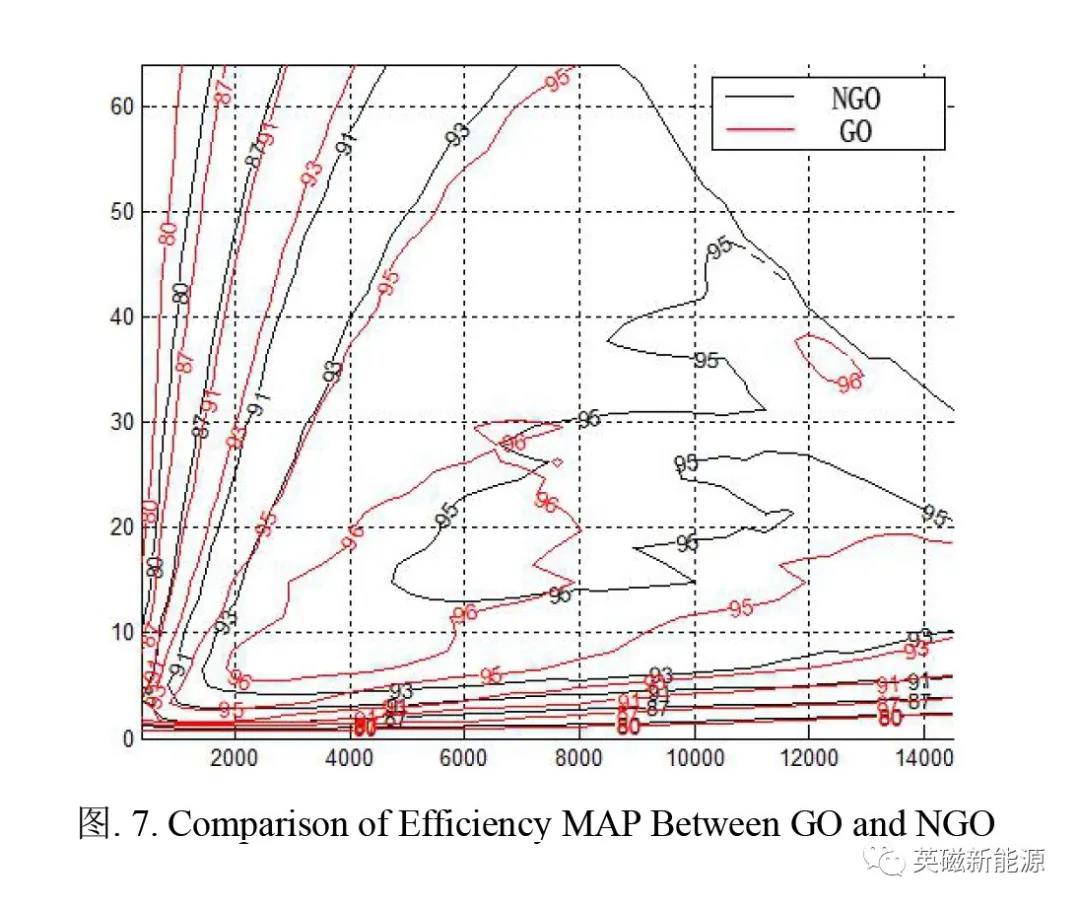2021-08-04
Digital simulation using finite element analysis method
Under rated conditions, the efficiency of both motors increases with the increase of speed. Efficiency increases first and then decreases. The efficiency of go motor reaches the maximum at 5120 rpm, and then decreases slowly. The efficiency at 5120 rpm is as high as 96.2%. The efficiency of conventional motor reaches the highest point at 6800 rpm and gradually decreases above 10000 rpm.
Under the peak condition, the efficiency increases with the increase of speed. Efficiency increases first and then decreases. The efficiency of go motor reaches the maximum at 8300 rpm and decreases slowly with the speed. The efficiency at 8300 rpm is as high as 96.8%. The efficiency of conventional motor reaches the highest point of 95.2% at 11000rpm, and then the same efficiency decreases with the increase of speed. Although the efficiency of go motor begins to decline at 8300 rpm, its overall efficiency of more than 95% is still better than that of conventional motor.

Prototype manufacturing
In this project, go silicon steel is applied to high-speed permanent magnet synchronous motor. The stator yoke and rotor adopt traditional NGO silicon steel, the stator teeth are anisotropic go silicon steel, and the permanent magnet material is rare earth neodymium iron boron.
Compared with the traditional motor processing technology, due to the particularity of go silicon steel material, the production of go iron core needs new technology in the manufacturing process. Among the different processes of iron core manufacturing, stamping and lamination process, assembly process and coating material manufacturing process have an important impact on the performance of go silicon steel motor.
NGO silicon steel yoke ring adopts single die method, and then the single piece is laminated and welded to form an annular cylinder. Go steel plate also adopts the single die method, first stamping into tooth shape, and then bonding through self-adhesive process to form go silicon steel blocks with the same shape and direction in the rolling direction. The inner side of NGO stator yoke is provided with a plurality of mortises, and each go stator tooth is provided with a tenon. Each stator core is connected by NGO stator yoke and go stator teeth, as shown in Figure 8.

When laminating go silicon steel, it is very different from the traditional perforated plate. Because the go punching sheet has a toothed structure, the self-adhesive coating structure can be stable and the vibration is relatively small. The process has the properties of high insulation, corrosion resistance and high strength. The conclusion is that through the application of go silicon steel in the rotor, the noise and vibration are reduced due to the stronger magnetostrictive performance, and the self-adhesive process has a positive impact on the overall performance of the motor.
Conclusion
This paper introduces a 12 slot 8-pole motor with b30ahv1500 magnetic core. Among them, the traditional NGO stator core is partially replaced by the combined structure of go silicon steel teeth and NGO yoke. The maximum efficiency of the motor increased from 95.2% to 96.8%, an increase of 1.6%. The excitation current at the maximum output torque decreases by 8%, which means that at the same current, the maximum torque will increase by about 8%. At the same time, the overall iron loss of the motor is reduced by 12.2%. The above results consider the calculation allowance of splicing process, which is about 10%. The final test results are consistent with our assumptions. Go silicon steel does show significant performance advantages through this stator core design.